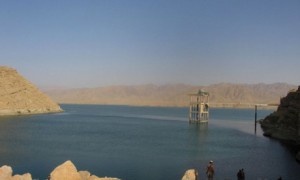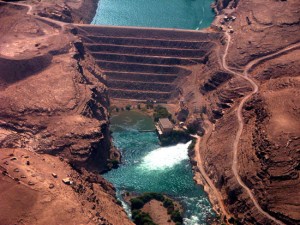The Captain’s Journal would like to see an official U.S. DoD after action report for the Russian campaign in Georgia, but in lieu of that, we offer a brief assessment of the Russian action. First, an assessment by Martin Sieff of UPI (concerning mostly equipment and military materiel).
The effective use of decades-old Russian T-72 main battle tanks in the brief conflict with Georgia again shows how supposedly obsolete weapons can still play a potent and even decisive role in modern war.
The Russian army did not rely exclusively on its 30-year-old T-72s. State-of-the-art T-90 main battle tanks also were identified during Russia’s brief but highly effective five-day drive into the former Soviet republic of Georgia last month.
But the old T-72s, upgraded with explosive-reactive armor, were there, too.
The Russians pushed ahead with overwhelming concentration of force, according to classic Carl von Clausewitz principles, using artillery, tactical air support for ground forces and a mix of older T-72 MBTs and modern ones backed up with overwhelming forces of highly mobile infantry.
Special forces were used effectively to pre-emptively seize potential bottleneck positions in the heavily forested Caucasus Mountains to prevent Georgian forces from slowing down the Russian drive.
In all, about 10,000 troops, still a very small proportion of the Russian armed forces, were used in the operation …
The old Soviet T-55 Main Battle Tank from the 1950s was notorious for its vulnerability to bursting into flame from a direct hit. But to this day, scores if not hundreds of them still do service as shows of military muscle for military dictatorships across sub-Saharan Africa and parts of Southeast Asia.
In the same way, the Russian army has been able to greatly extend the operational life of its old T-72s. Tank for tank, on paper they are no match for the more modern T-90s or U.S. Abrams MBTs.
But when they are launched in operations such as the Russian drive into Georgia, they can still exert more than enough overwhelming force to fulfill the dictums of von Clausewitz.
This has been overlooked and forgotten by Western pundits since the end of the Cold War and the collapse of the Soviet Union. The miserable performance of the Russian army in the first Chechen war of 1994-96 confirmed that the army had indeed become almost useless, weak, demoralized and disorganized during the chaotic early years in power of President Boris Yeltsin.
But that was then, and this is now. The Russian army today still could prove no match for the U.S. Army and its NATO allies at the peak of their power, but it doesn’t have to.
The U.S. Army and Marines have been exhausted by their ongoing commitment in Iraq fighting a relatively small but ongoing low-intensity counterinsurgency war against Sunni Muslim insurgents over the past 5 1/2 years.
And the nations of the European Union in general have allowed their conventional forces to run down to an extreme degree since the collapse of communism.
This article belongs in that category of fawning admiration of the mighty Russian bear, an assessment-type that we have rejected. The Captain’s Journal had previously judged that air power was the primary reason for the quick Russian win.
It’s easy to make too much of the Georgian retreat, especially when one considers the force strength by the numbers. Regardless of armor and artillery, the bottom line here is air power. Air superiority doesn’t ensure a victory, and lack of it doesn’t guarantee a loss. But it’s impossible to wage a conventional war against a larger armed forces without at least air equivalence.
We have also cited Ralph Peters, who knows first hand what the Russians had to do to field this force.
RUSSIA’s military is succeeding in its invasion of Georgia, but only because Moscow has applied overwhelming force.
This campaign was supposed to be the big debut for the Kremlin’s revitalized armed forces (funded by the country’s new petro-wealth). Well, the new Russian military looks a lot like the old Russian military: slovenly and not ready for prime time.
It can hammer tiny Georgia into submission – but this campaign unintentionally reveals plenty of enduring Russian weaknesses.
The most visible failings are those of the air force. Flying Moscow’s latest ground-attack jets armed with the country’s newest precision weapons, pilots are missing far more targets than they’re hitting.
All those strikes on civilian apartment buildings and other non-military targets? Some may be intentional (the Russians aren’t above terror-bombing), but most are just the result of ill-trained pilots flying scared.
They’re missing pipelines, rail lines and oil-storage facilities – just dumping their bombs as quickly as they can and heading home.
Russia’s also losing aircraft. The Kremlin admits two were shot down; the Georgians claimed they’d downed a dozen by Sunday. Split the difference, and you have seven or more Russian aircraft knocked out of the sky by a tiny enemy. Compare that to US Air Force losses – statistically zero – in combat in all of our wars since Desert Storm.
As one US officer observed to me, the Russian pilots are neither professionally nor emotionally toughened for their missions. Their equipment’s pretty good (not as good as ours), but their training lags – and their pilots log far fewer flight hours than ours do.
Russia has been planning and organizing this invasion for months. And they’re pulling it off – but the military’s embarrassing blunders must be infuriating Prime Minister Putin.
In a fawning assessment similar to Sieff article cited above, Sebastian Alison with Bloomberg supplies data that undermines the very point that these assessments attempt to make. “Georgia suffered more troop casualties — 215 killed and 1,200 wounded — than Russia, with 64 killed and 323 wounded, according to figures from both governments.”
This is a kill ratio for the Russians of approximately 3.4:1, and a casualty ratio of 3.7:1. This data is appalling given the Russian artillery and air superiority, and doesn’t even come close to matching the typical 10:1 ratio achieved by the U.S. in both Iraq and Afghanistan.
Col. Gian Gentile of West Point opines concerning the readiness of U.S. forces to conduct conventional warfare in light of the Russian aggression against Georgia.
Images of Georgian infantry moving under fire and Russian tanks on the attack show that the days of like armies fighting one another on battlefields are far from over.
What does this mean for the US Army? As it considers its role after Iraq, should it be restructured for war and conflict along the lines of counterinsurgency and nation-building, or toward conventional fighting as represented by the Georgian war?
Armies trained to fight conventional warfare can quickly and effectively shift to counterinsurgency and nation-building. Contrary to popular belief, the US Army proved this in Iraq.
Its lightning advance up to Baghdad in the spring of 2003 happened because it was a conventionally minded army, trained for fighting large battles.
If the Army had focused the majority of its time and resources prior to the Iraq war on counterinsurgency and nation-building, the march to Baghdad would have been much more costly in American lives and treasure.
[ … ]
Artillery firing was a critical asset in Russia’s crushing defeat of the Georgian Army.
There are a range of scenarios that might include the US having to engage in heavy fighting. One of them involves a possible failed North Korean state. Focusing on counterinsurgency and nation-building operations will not prepare the Army for such a possibility.
The American Army must do what it takes to win the wars in Iraq and Afghanistan. But good counterinsurgency tactics practiced by proficient combat outfits cannot compensate for flawed strategies and policies.
Considering events today in Georgia and the recent past of Israel in south Lebanon, the Army must soon refocus itself toward conventional warfighting skills, with the knowledge that if called on to do so, it can easily shift to nation-building and counterinsurgency as it has done in Iraq.
If it doesn’t, it courts strategic peril.
Perhaps. The Captain’s Journal certainly agrees that we must do what is necessary to win in both Iraq and Afghanistan. U.S. forces also must maintain air superiority over all near-peers, as well as qualifications in the tactics of conventional warfare.
But this assessment should not devolve into the fawning admiration for the “mighty Russian bear” that the cited assessments have. Remember, Georgian troops, lacking air power or artillery, reduced the Russian kill ratio to less than 4:1. Militarily speaking, there is no “mighty Russian bear.” The response to Russian thuggery remains an issue of will rather than military might. Russia intends for Georgia to be the first, not the only, step in its goal of reconstructing the Soviet empire.





